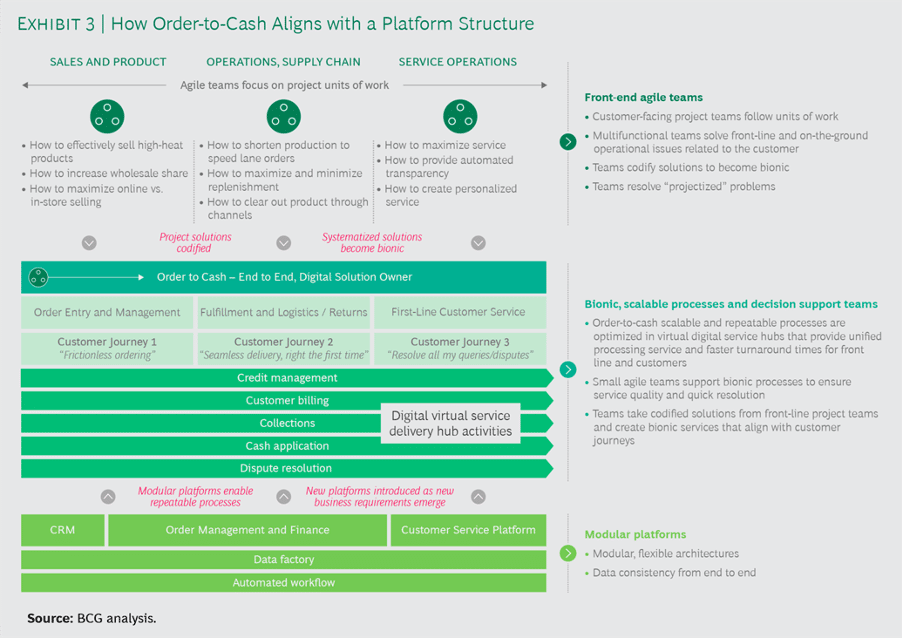

Author: Evelyne Legaux, Finance OTC Consulting Ltd
Manage your Order-to-Cash with Digital Transformation
Part 3 – Building an O2C Platform
So, what is an O2C platform organization and how does it benefit your business?
Time has come for companies to move away from traditional organization structures based on product lines, geographies & functions. Instead, companies should completely re-think their organization structure and put the customer at the core of a flexible ecosystem supported by a data-driven modular technology infrastructure & digitally enabled scalable processes. It is essential for an order-to-cash (O2C) platform to be adaptable to accommodate changing business requirements & accessible through web services.
In addition to the technology architecture itself, companies should consider changing their people organization by creating front-end multi-functional teams that manage the customer relationship & focus on creating the best customer solutions to optimize the latter’s experience, and agile decision-support teams who ensure scalable processes run smoothly & provide quick resolution.

Source: BCG, ‘Why O2C platforms are the future’ https://www.bcg.com/publications/2020/order-to-cash-platforms-are-the-future
When designing an O2C Platform, companies should consider the following guidelines:
- Integration – This is critical to ensure that data is shared across the modular technology solutions and the platform can synchronize externally with the customer’s applications.
- Customer Centricity – The platform should provide a customer self-service platform to optimize their satisfaction while minimizing the need for manual human intervention by the vendor.
- Shared Responsibility – An O2C platform being multifunctional in nature, it is essential for companies to define clear Roles & Responsibilities as to who owns each part of it and is responsible for fixing it.

Implementing an O2C Platform also comes with a number of challenges:
- All functions must be aligned and buy-in about the value expected from the platform. This can be overcome by appointing an end-to-end ‘O2C process owner’.
- The platform must benefit everyone hence the recommendation for companies to design the entire services & technology solution.
- Payback for the initial investment will happen over time, but in the long run incremental revenues & costs reduction should largely outweigh the financial effort.
- Transforming the O2C process takes a lot of design efforts & human resources in terms of cross-functional teams training. Companies should consider change management to facilitate it.
- Implementing an entire end-to-end O2C platform at the same time can be daunting. Such a big-bang approach however is not necessary. Instead, companies can choose a modular & flexible approach to address their biggest pain points first.
As previously mentioned & according to the Boston Consulting Group, transforming the O2C process can yield tangible & measurable benefits through transparency and automation:
- Boost revenue by 1% to 3%
- Reduce costs by 15% to 30%
- Up to 30% lower DSO
- Greatly enhanced customer experience
- Increased employee satisfaction.
The ultimate goal of implementing an O2C Platform for companies should be to turn an administrative process into a business driver through visibility over integrated real time data that helps create new insights into the 3rd party customer portfolio.
